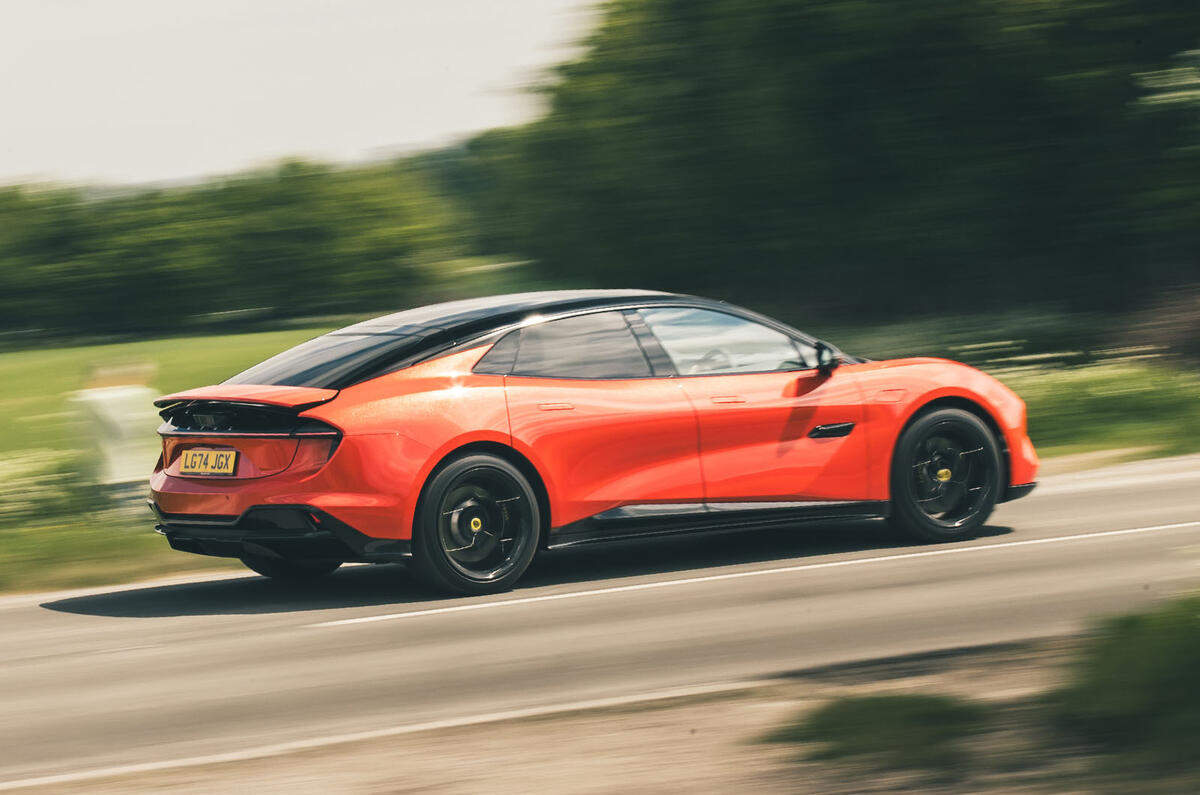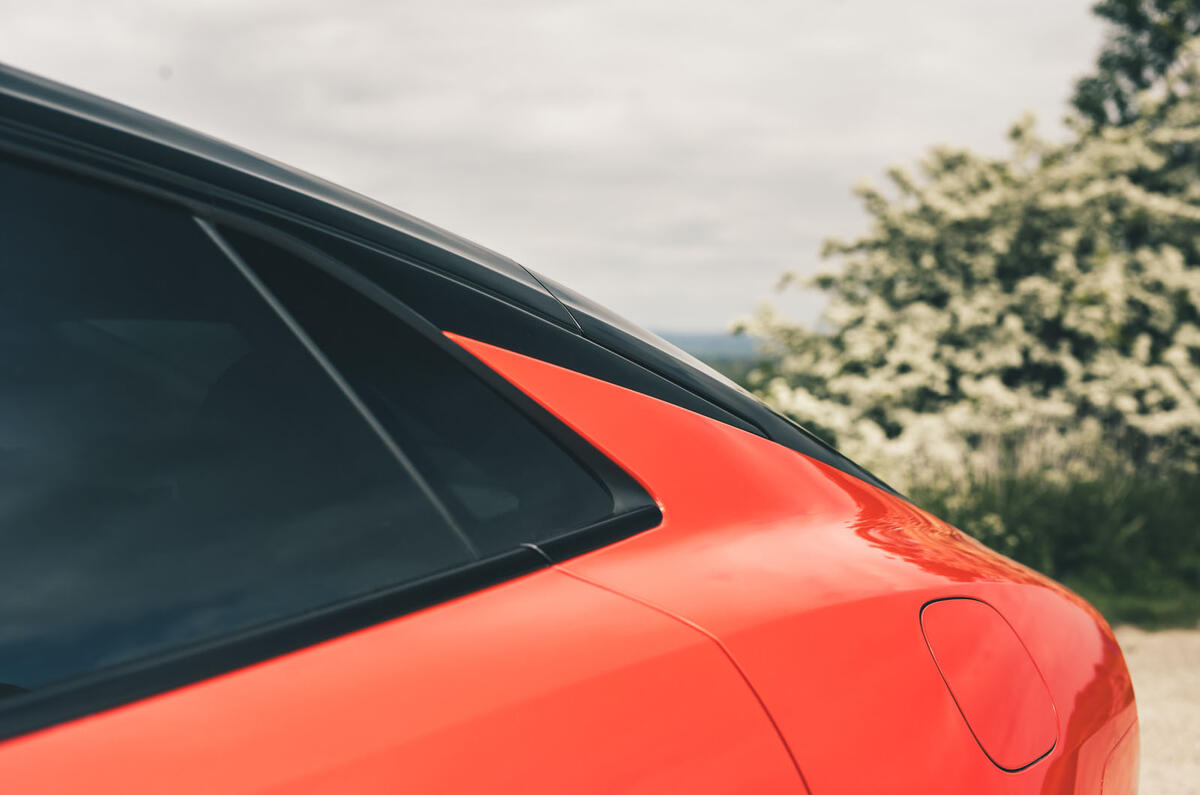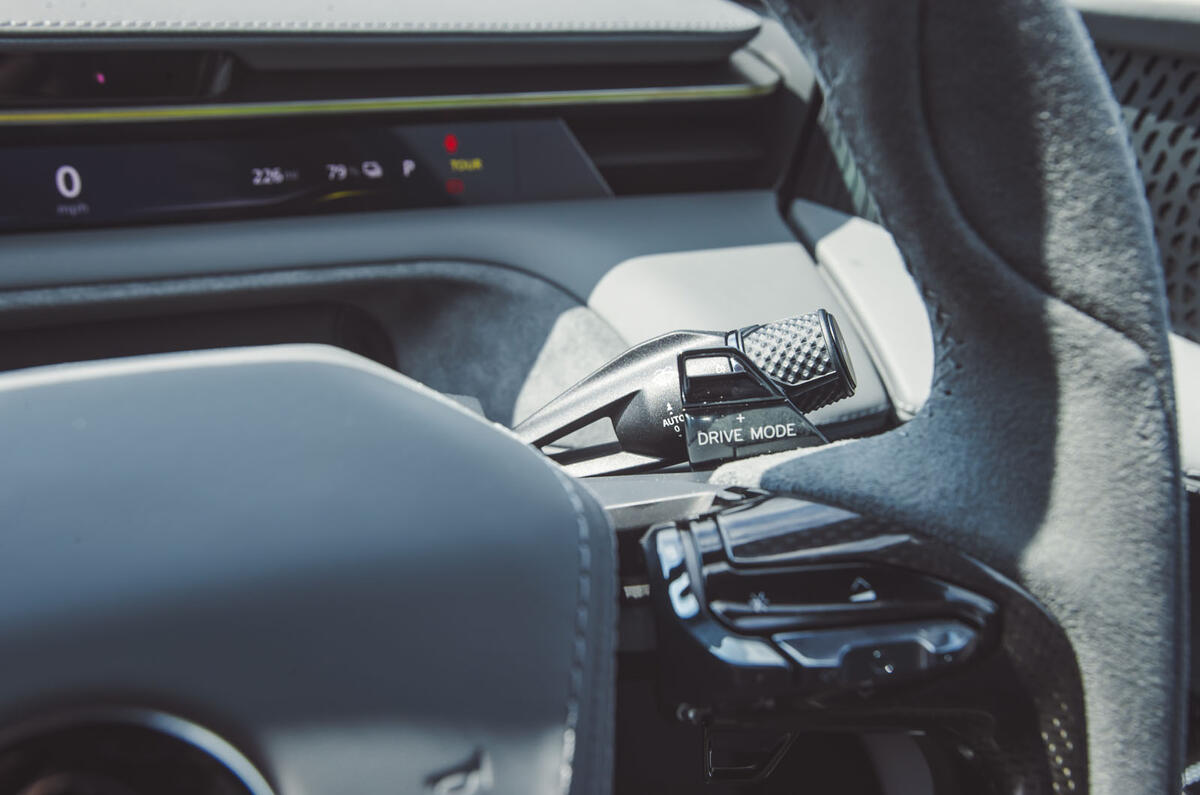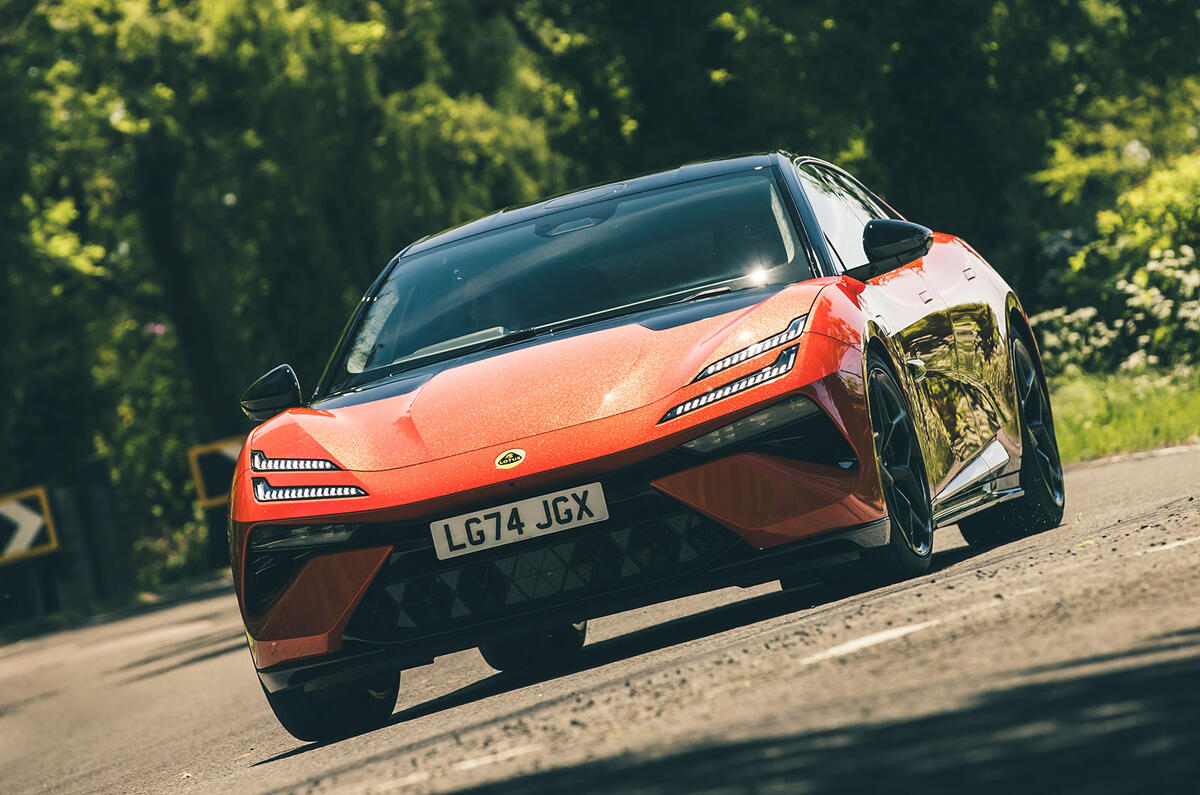The differences between the Tour and Sport modes aren’t enormous. The sense of mild rear bias to the torque split is slightly more pronounced in Sport than in Tour, and the air suspension firms up a little. Some might wish for more differentiation, but unlike in many cars with different suspension settings, Sport mode remains usable on UK roads.

You get the sense the suspension is fighting a little to keep the body in check over very bumpy roads. That is perhaps inevitable given how much weight it has to control, and you can’t expect it to ‘breathe with the road’ in classic Lotus fashion. Ultimately, the Emeya rides well enough. It can’t escape some head toss over uneven roads and some clunking over corrugations, but none of it is egregious for a sports saloon. Ultimately it can’t compete for ride comfort with a Taycan on Porsche’s extraordinary Active Ride system, but then nothing really can.
This all applies to the Emeya S that we’ve road tested in the UK. When we tried the 900, we found it rather overwrought; it doesn’t much express itself, despite a torque split that’s technically more rear-biased. The steering doesn’t have the same class, either.
Track notes
Anyone dreaming of an electric Lotus Carlton will be disappointed by the Emeya. While it is very competent, it doesn’t tolerate any ham-fisted hooliganism. Drive it neatly, and it will behave in much the same way as it does on the road. You’re unlikely to run out of grip or traction, and the accurate and communicative steering lets you drive right up to the limit. Adding power or lifting off will tighten the line, but only up to a point. All of our attempts to get it sideways on the dry handling track proved futile.
On MIRA’s wet handling circuit, the Emeya still preferred grip over slip. It is possible to overwhelm the rear axle with power, but holding a drift is very difficult, since the car seems to want to either pull itself out with front drive or spin. Instead, the most satisfying way around a wet circuit is to set the car up for a corner with some weight transfer, and then try to maintain neutral steer on the way out.
Assisted driving
Our test subject was an early Emeya in a specification that is no longer available to order. Even though it was quite well equipped, it lacked both the Highway Assist Pack (£1900 on the base Emeya, standard on every other trim) and the £4250 Lidar Pack. Even so, you would expect a company that clearly takes assisted driving seriously to give a good showing even in standard spec.
Unfortunately, none of the ADAS worked all that well. The adaptive cruise control, while tolerable, was prone to braking if you engaged it while still a little too close to the car in front. On single carriageways it would often brake for oncoming traffic. The lane keep assist would bong and interfere with the steering too early, and the overspeed and driver fatigue warnings were especially keen to pipe up.
Thankfully, at the top of the screen there is a shortcut that takes you to an ADAS menu where you can disable all of them fairly easily. Even though the car turns on and off based on a person’s weight being in the driver’s seat, the ADAS don’t immediately reactivate when you stop and get out of the car.
















































































